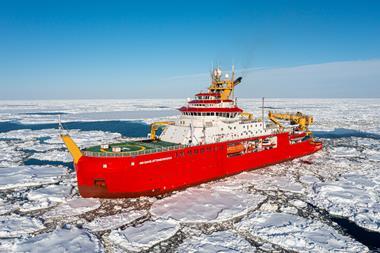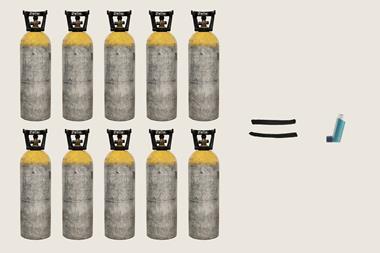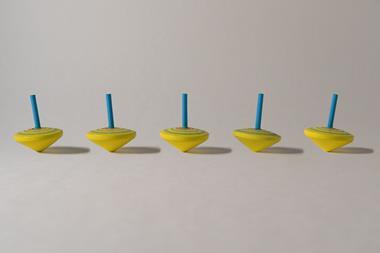Whatman claims to be in good health after restructuring and has been on the acquisition trail. Karen Harries-Rees reports
Whatman claims to be in good health after restructuring and has been on the acquisition trail. Karen Harries-Rees reports
Whatman has a busy time ahead. The company, which supplies membranes and media for a range of products in the analytical lab filtration, life science and medical technology markets, is looking for a new chief executive officer. It is also integrating competitor Schleicher & Schuell (S&S) which it bought in late 2004.
Chief executive Howard Kelly stepped down in November, after just over a year in the job. He joined Whatman in August 2003, from US pharmaceutical giant Baxter, after his predecessor fell victim to chairman Bob Thian’s boardroom reshuffle. In a smaller company, Kelly needed to determine and implement strategy without a large support infrastructure. His performance didn’t meet the board’s expectations, says Phil Greenhalgh, chief financial officer.
Since Kelly’s departure the company has been looking for a successor. Five have been short-listed and Thian has narrowed it down to two. The non-executive directors now need to choose.
The company has a bit of catching up to do. Kelly’s departure, combined with two regional sales managers also leaving in late 2004, caused a dip in sales at the end of 2004 and in the first quarter of 2005. Until the new chief executive starts, vice chairman Thomas McNally has taken responsibility for R&D, business development and sales.
The company expects to recover its lost sales, but even if it doesn’t, it can still meet expectations for the full year, says Greenhalgh.
Meanwhile, Thian is looking after the integration and management of S&S. Whatman completed the €50.2 million (?34.8 million) acquisition of S&S, based in Dassel, Germany, in November last year. It bought the company’s BioScience and MicroScience divisions.
The deal, which was financed in full by debt, has added around 40 per cent in sales and has given Whatman a significant presence in Germany and central Europe, complementing its strength in the UK and US.
In addition to S&S’s main Dassel operation, Whatman has gained facilities in the US in Florida and New Hampshire, sales offices in Europe and around 400 employees.
Synergies between the two companies will provide savings of ?8 million by 2007, while the acquisition is anticipated to raise earnings by 48 per cent by 2007.
’This transaction has a compelling strategic logic,’ says Thian. ’There is an excellent commercial and geographic fit between the two companies and S&S brings some very interesting new technologies with potential for rapid growth.’
This boost in scale is particularly noticeable in Whatman’s LabSciences division. Prior to the acquisition the company had a 10 per cent share of the filtration market for the analytical industry. This has now increased to 16 per cent, putting Whatman into a strong third position, behind Millipore (with an estimated 35 per cent) and Pall (with around 30 per cent). In the US, the enlarged group will benefit from S&S’s presence in the US bioscience and medical technology sectors.
Whatman’s own restructuring over the past couple of years has helped make the integration easier, says development director, LabSciences Helen Evans. During 2003 and 2004, Whatman’s restructuring reduced the number of products it produces from 16 000 to 4000. In addition loss-making businesses, including HemaSure and its filter cartridge business, were sold; 14 manufacturing sites were reduced to three core sites; and staffing was cut from 1050 to 725 employees.
The restructuring was tough for staff at Whatman and Evans feels the acquisition is a ’nice indication to them that we did well, that the organisation is healthy and vibrant and able to take on new challenges’.
The process was mostly completed before the acquisition. It has been an advantage, says Evans. ’We have learnt a lot over the last two years. Now we have the same group of people doing a restructuring again, this time with some S&S colleagues. S&S has some similarities to Whatman a couple of years ago.’
Product and manufacturing rationalisation are key to the integration. Rationalising the facilities will cost ?11.4 million and will result in the loss of about 160 jobs, taking the combined number of staff to around 1000. The two companies have paper conversion facilities in Dassel, Germany, and Banbury, UK. This will be consolidated into one of the sites. Whatman has not yet decided which site will close, but says the costs are much the same whichever is chosen.
The combined company has about 21 000 products and it plans to cut this to 7000, at a cost of ?0.8 million. The integration and rationalisation will be finished by the fourth quarter this year.
The acquisition demonstrates Whatman’s commitment to the lab sciences market. Evans says that although bioscience is a growth area for the company, ’lab science is not something we are walking away from. The challenge for us is remaining invested in the business and continuing to develop and launch innovative products. I think that’s quite different to some of our competitors who are focusing on genomics, proteomics etc. It is a market we are staying in’.
The division has set itself a tough goal of becoming an increasingly strong third player and eventually moving into second place, although Evans declined to say over what timescale.
Geographically, the division has reasons to focus on three key markets. The US is still its biggest market, in terms of growth percentage. However, with the acquisition, there is a lot of potential new business in Europe, while the Asian market is growing strongly, but from a lower starting point.
The Asian market is a key focus for the MedTech group, which has seen its customers change. Business is moving from well established and equipped facilities in the West, to new companies with less well established labs in Asia.
The S&S merger will have a significant impact on this group because it will couple Whatman’s glass fibre and cellulose expertise with S&S’s membranes.
The S&S acquisition also opens up the proteomics market for the BioScience group through its blotting products and protein microarrays, which business development manager, BioScience, LiLi Lee, believes complement Whatman’s current focus on the nucleic acid market.
Lee says the challenge for the division is ’focus, focus, focus’. Each market is interested in different aspects of its key product FTA, used for collecting, archiving and purifying DNA. ’In some markets, the long-term storage aspect is the draw, while in others it’s inactivation of pathogens. We are focusing on are human and animal identification and genomics,’ says Lee.
The launch of the EasyClone 384 plate has made the genomics market particularly exciting, says Lee. Relying on FTA technology, the EasyClone 384 plate consists of a 384-well storage and extraction plate with a piercable foil bottom and FTA discs pre-cut into each well. The plate enables the genomics market to use FTA instead of ultra-low archiving and purification kits.
Continuing to be innovative is a key challenge for the group. ’There is always competition out there, be it direct or indirect, and we see new emerging technologies every day that keep us on our feet and push us to remain innovative and competitive,’ says Lee.
This will be helped by Whatman’s planned manufacturing improvement programme, which is due to start in the summer with the aim of boosting operating margins. So, a busy year.
Inside Schleicher & Schuell
Sales: €49.2m (?33.5m)
Profits before tax: €1.5m
Filtration based products and technologies for laboratory filtration, focus on the bio-pharmaceutical industry
2003 sales: €30.3m
Paper and membrane technology for point of care diagnostics and pharmaceutical research labs
2003 sales: €18.8m
Key products: neo-natal screening swabs, 90% of global market; protein microarray technology
Inside Whatman
Turnover: ?82.8m, down 1%
Operating profit: ?2.9m, down 78%
Operating profit (continuing operations, excluding exceptional charges and acquisitions and disposals): ?18.2m, up 29%
Operating margins: 23% (2003: 17%)
Cellulose and glass filtration media, membranes, capsules, chromatography, syringe filters
2004 sales: ?47.9m, up 7.1%
Key products: Mini-Uniprep, a syringeless filter with 53% growth in sales; GD/X, syringe filter with 18% growth in sales; Purasil, silica gel for small molecule flash chromatography purification, launched mid-2004
Filtration components for medical device and clinical diagnostic test manufacturers
2004 sales: ?15.3m, down 3.7%
Key products: Fusion 5, has all the functions of a lateral flow strip on a single material for diagnostic test development, launched April 2004
FTA products for collecting, archiving and purifying DNA, multiwell plates, column based DNA separation, electrophoresis products
2004 sales: ?10.7m, up 17%
Key products: FTA, 39% growth in sales; Easy Clone, launched December 2004






No comments yet